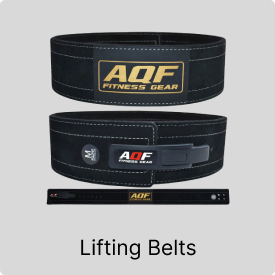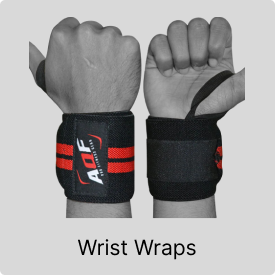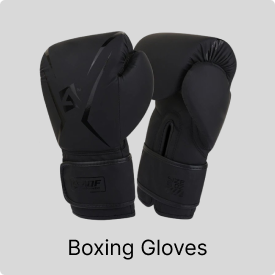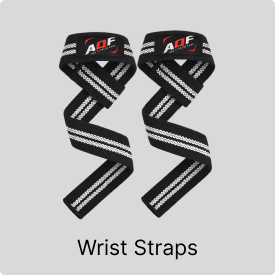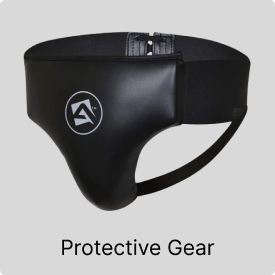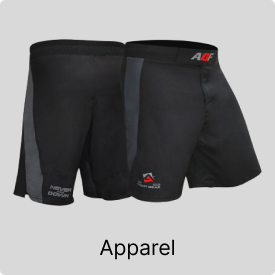Knee Wraps vs Knee Sleeves: Yes! They Are Different
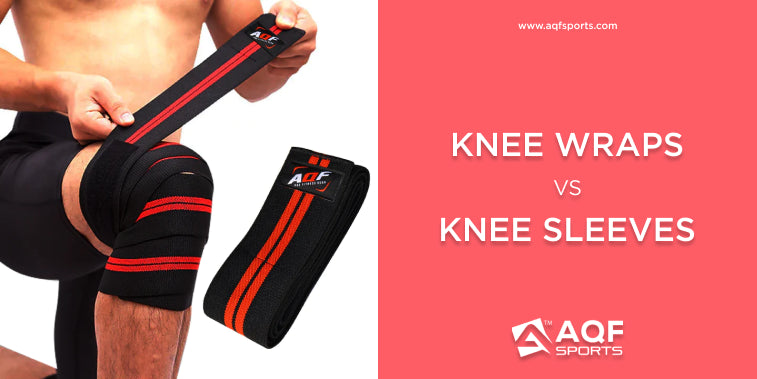
The final, decision-making, battle of knee wraps vs knee sleeves. Ready to find out who takes the win.
Knee wraps and Knee sleeves, aren’t they the same thing and serve the same purpose?
No, and no. It might be surprising to hear but both pieces of equipment serve a unique purpose and have unique perks and drawbacks.
So, what is the actual difference between them? And what do they do for our fitness goals? Here’s a detailed breakdown and how they differ from one another:
Knee Wraps
What Are Knee Wraps?
Knee wraps are worn for the purpose of knee protection and are usually worn by competitive bodybuilders and powerlifters (powerlifting knee wraps). Made of elastic, similar to the one, used to make wrist wraps, they are intended to be wrapped around the knee in a diagonal or spiral way to get knee support for squats.
Before you dive into how to use them, it’s recommended that you first educate yourself about their proper usage.
Why Use Knee Wraps?
Knee wraps help you add more weights when doing weighted squats as they let a lifter conserve energy when going down during a squat. The energy, being elastic in nature, lets a person get up from the bottom of a squat. Besides, knee wraps have been proven to decrease the pressure exerted on the quadriceps tendon while heavy lifting. So, if you use knee wraps for weight lifting, your quads will stay attached to your knee during max effort squats.

Related: 11 Weighted Squats Variations You Need to Add to Your Workout Routine
Pros and Cons of Knee Wraps
Pros
- Knee wraps allow the storage of elastic energy and let you lift heavier weights, thus, adding 15-30% to your lifts.
Also read: 15 Best Compound Lifts and Exercises to Gain Muscle Mass
- They reduce stress exerted on the quadriceps tendon, which links to the patella and quadriceps. Your tendons pull the patella when you squat down. So, decreasing the tension on the tendon assists in decreasing the chances of tearing the quads while lifting heavy weight.
- It is a mandatory piece of equipment used by powerlifters taking part in an equipped division to prevent any injury. As a matter of fact, knee wraps alter the horizontal movement of lifters, which changes the targeted muscles.
Cons
- You can not use knee wraps for every exercise, they are only used for a few specific exercises.
- While they help lift more weight, they don’t help the lifter to get stronger because they are restrictive in nature, and they increase the friction between the cartilage and patella of the knee cap.
- According to a 2012 study published in the Journal of Strength and Conditioning Research (1), the decrease in horizontal movement changes the lifters’ technique and the muscles targeted, and it also, at the same time, increases friction in the knee joint.
-

78 Inch Elasticated Knee Wraps
View Details -

79 Inch Elasticated Knee Wraps
View Details -

Neoprene Knee Support Sleeve
View Details
Knee Sleeves
What Are Knee Sleeves?
Knee sleeves are used by people in every exercise. From bodybuilders and powerlifters to cross-fitters you will see people wearing these almost everywhere. Typically, made from neoprene, they keep the knees warm. Some people use them for squatting, as well.
What does a knee sleeve do? A knee sleeve helps with pain and swelling by providing compression. They can also prevent minor injuries & work well for mild knee pain.
Why Use Knee Sleeves?
As we have already mentioned above, knee sleeves are made from neoprene which mainly offers 2 important benefits to the knee capsule:
- It offers compression to the knee.
- It offers heat that keeps the knee warm & improve blood flow when exercising.
This way, they protect knees from damage and potential future injuries.
Pros and Cons of Knee Sleeves
Pros
- Knee sleeves can be, used for all types of lifting exercises, including Olympic weightlifting, CrossFit training, powerlifting and bodybuilding. Plus, you can wear them for several lower body exercises.
- Apart from the reasons why you should wear them, mentioned above, knee sleeves also assist the mechanics of an exercise by restricting patella movement, providing lateral stability, and increasing proprioception.
- They offer compression, which increases the blood flow to the knee. This reduces pain and increases the recovery time. As a result, knee sleeves can help you recover from an injury faster.
Cons
- While they are amazing for certain types of lifters, they are not fit for everyone. They will not necessarily help you lift heavier weights, so they aren’t what you use for a miracle.
- They require serious care. You will have to wash them every week to avoid stink and increase durability.
- Knee sleeves provide heat which is a good thing, but heat produces sweat, and we all know what happens when you sweat profusely. So, if you don’t want your legs to omit unbearable odour, then these aren’t for you.
Also Read: 15 Best Compound Lifts and Exercises to Gain Muscle Mass
The Differences Between Knee Wraps vs Knee Sleeves
Tightness
Knee wraps are wrapped so tightly around the knee that it limits the knee from moving freely in the absence of the loaded weight. It provides stability to the knee and helps in lifting more weight.
On the other hand sleeves, hug the knees snugly and are tight, but they still allow you to bend your knee freely. Most people wear their knee sleeves as tight as they can to gain maximum stability and warmth, but they can never be as tight as knee wraps.
Ease of Use
Wraps are difficult to use because you need to know how to properly wrap them to minimise injury and maximise performance. They are meant to be very tight to increase the weight you can lift. That’s why most professionals ask a partner to wrap their knees.
Sleeves, on the contrary, are very easy to use as long as you know you have picked the correct size. Then you just have to slide them on in a way that they cover your knees. But keep in mind to centre the knee sleeve on the knee to allocate equal material to both above and below the knee.
Type of Lifting
Knee wraps should only be worn, by people, who have tried knee sleeves before or by competitive powerlifters. If you want to wear them for powerlifting, then wear them only when you compete in a specific division. They are perfect for gaining extra advantage during heavy squats.
Knee sleeves, however, are perfect for the majority of people working at the gym. They add slight compression for stabilisation of the knee and can be used for an array of exercises without any real deal-breaker.
Design and Material
Knee wraps are designed to spiral around your knee in a circular motion. They are available in either 2 m or 2.5 m lengths and look like a long strip of material that wraps around your knee. Plus, they are made from elastic materials that stretch as you wrap your knee.
Knee sleeves are intended to slide up the lower leg and have 3 different thicknesses delivering different levels of support. They are available in either 20 cm or 30 cm lengths and resemble a tube that you slide up the leg to cover your knee. Besides, they, are made, using neoprene, which is heat-producing, abrasion/tear-resistant, and has good pliability.
Cost
Knee wraps are more affordable than sleeves. Consider their stiffness and length when buying and look for special features like rubber stripping, which prevents the wrap from sliding off.
Sleeves usually fall in the higher price range and the two main things you need to consider when buying them are the size and thickness because they contribute to the price tag. The more expensive one generally tend to last longer.

So, Which One Is Better For Prevent Injuries During lifting? (Final Word)
It depends on your requirements and your preferences as well. If you have weak knees, then knee wraps can improve your deadlifts and squats because they work wonders for weightlifters and powerlifters. There isn’t much you can do other than using them.
But if you feel that knee wraps are too much for your knees then try knee sleeves. They have similar perks, but they are easier to wear and offer a good amount of support without being a hindrance.
Generally, powerlifters prefer knee wraps, while the CrossFit community like knee sleeves. So, instead of looking at others, allow your fitness goals and concerns to guide your final decision.
You will also like our other articles related to weight lifting & gym equipment:
- Wrist Straps vs Wrist Wraps – Everything There Is to Know!
- Top 13 Benefits of Wearing Compression Shorts During Exercise
- 19 Gym Essentials Every Fitness Lover Needs
- The Definitive Weightlifting Belts Guide (2020)
- Romanian Deadlift: How to, Benefits, Tips, and Variations
- Say Goodbye to Weightlifting Calluses With These 7 Tip
References
(1) Lake, Jason P., Patrick JC Carden, and Kath A. Shorter. “Wearing knee wraps affects mechanical output and performance characteristics of back squat exercise.” The Journal of Strength & Conditioning Research 26, no. 10 (2012): 2844-2849.
